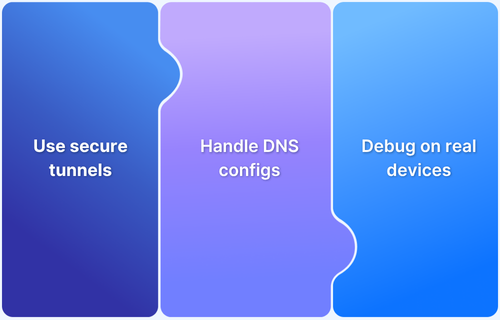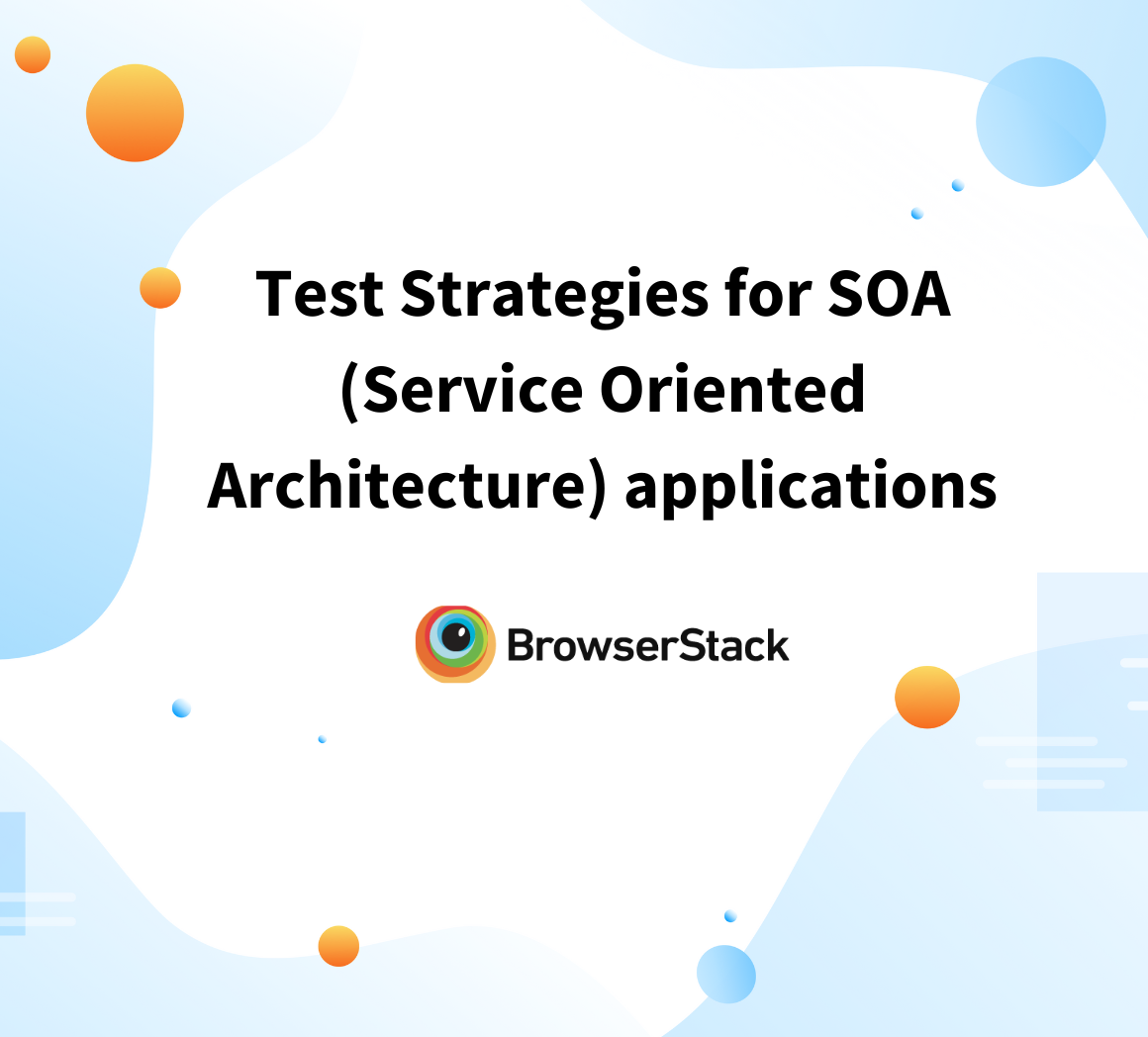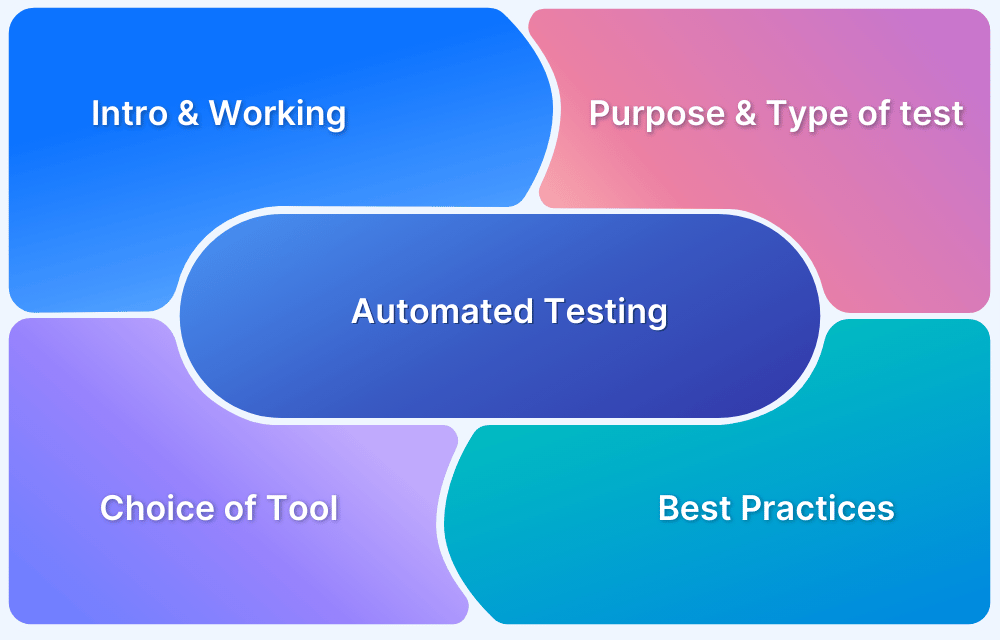Modern users access websites and web applications from a wide variety of browsers, operating systems, and devices. According to StatCounter, Chrome, Safari, Edge, and Firefox collectively account for billions of active users worldwide, but their rendering engines and JavaScript behaviors differ in subtle but impactful ways. A feature that looks flawless in Chrome on Windows might break on Safari running on macOS or iOS.
Overview
Why Automate Cross-Browser Testing?
- Speed: Faster test execution.
- Consistency: Removes human error.
- Scalability: Handles many browsers/devices.
- Early Feedback: Finds bugs in CI/CD.
- Cost-Effective: Saves QA time.
When to Automate Cross-Browser Tests?
- High-Traffic Features: Core workflows.
- Regression: Repeated checks.
- Stable UI: Less design churn.
- CI/CD: Build/deploy tests
Cross browser testing ensures that applications behave consistently across this fragmented environment. However, performing this testing manually is slow, repetitive, and prone to oversights. Automated cross-browser testing accelerates the process, improves accuracy, and enables continuous quality checks in fast-moving development pipelines.
What is Cross-Browser Testing?
Cross-browser testing is the practice of validating the functionality, usability, and visual consistency of a web application across multiple browsers and device combinations.
It covers three primary dimensions:
- Functionality validation: Ensuring features like forms, buttons, and navigation behave correctly on all browsers.
- Visual rendering: Verifying that layouts, fonts, and styling remain intact despite differences in browser rendering engines.
- Performance behavior: Checking loading speed, responsiveness, and resource consumption across platforms.
Without cross-browser testing, teams risk shipping applications that alienate segments of users, leading to higher bounce rates and reputational damage.
What is Automated Cross Browser Testing?
Automated cross-browser testing is the process of using automation tools and scripts to verify that a web application works consistently across multiple browsers, browser versions, operating systems, and devices.
Instead of manually checking each browser, automated tests are written once and executed automatically across different environments. This ensures that:
- Functionality (forms, navigation, buttons, workflows) behaves as expected everywhere.
- Visual rendering (layouts, fonts, styles, and responsive design) stays consistent across browsers.
- Performance (loading speed, responsiveness, and compatibility) is reliable regardless of the user’s setup.
Why Automate Cross-Browser Testing?
Automating cross-browser testing addresses the inefficiencies and risks of manual execution. Key reasons include:
- Speed: Executes large test suites quickly across dozens of browser-device combinations, reducing release cycles.
- Consistency: Eliminates human bias and error by running the same scripts repeatedly with identical logic.
- Scalability: Supports testing on an expanding matrix of browsers, devices, and operating systems without overwhelming teams.
- Early feedback: Integrates into CI/CD pipelines to catch bugs before production, preventing costly rollbacks.
- Cost-effectiveness: Reduces the manpower needed for repetitive manual validations, freeing QA resources for exploratory testing.
When to Automate Cross-Browser Tests?
Automation should be applied selectively to maximize ROI.
- High-traffic features: Automate core workflows like login, checkout, or search, which must always work across browsers.
- Regression testing: Automate repeated checks after every code change to ensure nothing breaks in existing functionality.
- Stable UI areas: Automate portions of the application less prone to frequent design changes, minimizing script rework.
- CI/CD integration points: Automate tests that need to run on every build or deployment for quick quality assurance.
- Multi-browser coverage requirements: Automate whenever the product roadmap or compliance mandates testing on multiple browsers simultaneously.
Manual testing can still complement automation for exploratory or edge-case scenarios, but automation is essential for scaling.
How to Implement Cross-Browser Test Automation?
A structured approach ensures smooth adoption:
- Define the scope: Identify critical user journeys, supported browsers, OS versions, and device categories. Prioritize based on traffic analytics and business requirements.
- Choose the right automation framework: Popular choices include Selenium, Cypress, and Playwright, each offering browser automation capabilities. The framework should support multiple browsers and integrate with CI/CD pipelines.
- Design maintainable test scripts: Use modular structures such as the Page Object Model (POM) to encapsulate locators and reduce duplication. This keeps scripts maintainable as UI changes occur.
- Set up test environments: Decide whether to run tests on local infrastructure, cloud-based solutions, or hybrid models. Local setups are cost-efficient but limited in coverage, while cloud platforms provide scalability.
- Integrate into CI/CD: Configure pipelines to trigger cross-browser test suites automatically on pull requests or deployments, ensuring quick feedback.
- Monitor and analyze results: Collect logs, screenshots, and video recordings for each run to diagnose failures quickly. Reporting dashboards help teams track trends in stability across browsers.
Tools for Automating Cross-Browser Testing
Here are some of the top tools for automating cross browser testing:
BrowserStack Automate
A cloud-based platform offering access to 3500+ real browsers and devices. It removes the need to build and maintain internal testing labs and integrates with popular automation frameworks like Selenium, Playwright, and Cypress.
Features:
- Real-device and real-browser cloud testing
- Parallel execution for faster test cycles
- CI/CD integrations with Jenkins, GitHub Actions, GitLab, and more
- Debugging support with logs, screenshots, and video recordings
- Supports Selenium, Cypress, Playwright, and TestCafe
Pros:
- Large, continuously updated device-browser matrix
- Eliminates infrastructure overhead
- Reliable real-device conditions instead of emulators
Cons:
- Subscription-based pricing may be high for small teams
- Requires internet connectivity to run tests
Selenium WebDriver
An open-source framework that automates browsers by controlling native browser drivers. It supports multiple programming languages and remains a standard in cross-browser testing.
Features:
- Multi-language support (Java, Python, C#, JavaScript, Ruby, PHP)
- Works across major browsers (Chrome, Firefox, Safari, Edge, Opera)
- Flexible and highly extensible
- Large open-source community and ecosystem of libraries
Pros:
- Free and open-source
- Wide adoption and strong community support
- Highly customizable with integrations
Cons:
- No built-in test runner or reporting; requires additional frameworks
- Needs infrastructure setup for parallel execution and scaling
- Steeper learning curve for beginners
Cypress
A modern end-to-end testing framework built for JavaScript applications. Known for its developer-friendly experience, Cypress runs directly in the browser and provides real-time reloading.
Features:
- Fast test execution with real-time reloads
- Automatic waiting for elements and actions
- Easy setup with built-in test runner and dashboard
- Strong support for front-end frameworks like React, Angular, and Vue
Pros:
- Intuitive syntax and easy onboarding for developers
- Built-in time-travel debugging and rich dashboard
- Great for testing modern JavaScript-heavy apps
Cons:
- Limited cross-browser support compared to Selenium and Playwright
- Primarily JavaScript/TypeScript focused
- Lacks native mobile testing support
Playwright
Developed by Microsoft, Playwright is a relatively new but powerful framework for cross-browser automation. It supports Chromium, Firefox, and WebKit out of the box, enabling testing on Chrome, Edge, Safari, and more.
Features:
- Auto-waiting for elements and network stability
- Cross-browser and cross-platform support (Windows, macOS, Linux)
- Built-in API testing and network interception
- Advanced debugging tools like the trace viewer
Pros:
- Strong cross-browser coverage including WebKit (Safari engine)
- Developer-friendly APIs with modern features
- Supports multiple languages (JavaScript, TypeScript, Python, Java, .NET)
Cons:
- Comparatively newer, so ecosystem is still growing
- Smaller community than Selenium
- Limited third-party plugins and tools compared to older frameworks
TestNG and JUnit
TestNG (Java) and JUnit (Java) are popular test runners that help organize, manage, and execute automated tests. They are often used alongside Selenium for structuring large test suites.
Features:
- Support for test grouping, sequencing, and parameterization
- Built-in reporting capabilities
- Easy integration with CI/CD pipelines
- Strong support for annotations to control test behavior
Pros:
- Mature frameworks with strong adoption
- Easy test management and execution control
- Great for regression and large-scale test suites
Cons:
- Language-specific (primarily Java)
- Requires pairing with Selenium or other automation frameworks
- Limited direct browser automation capabilities
Techniques for Effective Cross-Browser Test Automation
Teams can adopt the following techniques to maximize reliability and coverage:
- Parallel execution: Run tests simultaneously across multiple browsers to drastically cut execution time.
- Headless testing: Use headless browsers like Chrome Headless or Playwright’s driver for faster validation in CI environments.
- Selective test execution: Focus only on critical browsers and workflows rather than the full matrix on every build.
- Data-driven testing: Externalize input data to validate scenarios across varied datasets without rewriting scripts.
- Visual validation tools: Incorporate screenshot comparisons to detect UI rendering differences across browsers.
- Dynamic waits: Replace hard-coded delays with explicit waits for DOM elements to avoid flakiness.
Best Practices for Cross-Browser Test Automation
Following best practices ensures long-term maintainability and effectiveness:
- Prioritize based on analytics: Test on browsers and devices used most by your audience, not the entire ecosystem.
- Use stable selectors: Leverage data attributes (data-testid) instead of fragile XPath or CSS locators tied to UI layout.
- Adopt modular frameworks: Encapsulate UI actions into reusable components using POM or Screenplay patterns.
- Integrate with CI/CD pipelines: Trigger automated runs with every commit to catch regressions early.
- Leverage parallelism: Use cloud-based grids for concurrent execution across different browsers.
- Maintain test documentation: Keep records of supported browsers, test coverage, and known limitations to avoid blind spots.
- Review and refactor scripts periodically: Remove obsolete tests and update scripts to reflect application changes.
Challenges in Cross-Browser Test Automation and Solutions
Automating cross-browser tests introduces unique challenges:
- Environment setup: Managing a local browser/device grid is resource-intensive.
Solution: Use cloud platforms like BrowserStack to access a wide device-browser matrix without infrastructure overhead. - Flaky tests: Variations in network latency, rendering times, or asynchronous behavior can cause false positives.
Solution: Implement explicit waits, retry logic, and robust synchronization. - UI rendering differences: CSS and JavaScript may behave differently across browsers.
Solution: Include visual validation tests alongside functional checks to capture subtle rendering bugs. - High execution time: Testing every browser-device combination can be slow.
Solution: Prioritize popular browsers, use parallel execution, and run full test matrices only on release candidates. - Script maintenance overhead: Frequent UI changes can break tests.
Solution: Adopt maintainable frameworks like POM and modular test design.
Why perform Cross-Browser Automation Testing on Real Devices?
Running cross-browser tests only on emulators or headless browsers often fails to capture the complexities of real-world environments. Real devices introduce nuances in hardware, operating systems, and native browser implementations that cannot be fully replicated in virtual setups.
- Accurate rendering validation: Different devices may render fonts, layouts, and CSS differently, even within the same browser family. Real devices ensure pixel-perfect validation.
- Performance insights: Factors like CPU, GPU, and memory affect load speed and responsiveness. Testing on actual hardware reveals performance bottlenecks missed by emulators.
- OS-level differences: Mobile platforms like iOS and Android introduce unique behaviors, permissions, and security settings that only real devices can expose.
- Network variability: Real devices allow simulation of real-world conditions like 3G, 4G, 5G, or unstable Wi-Fi connections, which heavily influence user experience.
- Reliability of results: Tests executed on physical devices provide results that are closer to what end-users will actually encounter, reducing the risk of false positives or negatives.
BrowserStack Automate makes this practical by providing instant access to thousands of real devices and browsers in the cloud.
Teams can run automated test suites across multiple platforms simultaneously, capture logs, screenshots, and videos, and debug issues faster—all without managing a physical device lab. This ensures applications are validated in the same conditions users face, improving release confidence and overall product quality.
Get Expert QA Guidance Today
Schedule a call with BrowserStack QA specialists to discuss your testing challenges, automation strategies, and tool integrations. Gain actionable insights tailored to your projects and ensure faster, more reliable software delivery.
Conclusion
Cross-browser test automation is no longer optional in modern development. With users accessing applications through a wide range of browsers and devices, consistent quality depends on automated strategies that ensure speed, accuracy, and scalability. By combining robust frameworks, best practices, and real-device testing platforms like BrowserStack Automate, teams can deliver applications that provide seamless user experiences everywhere.






